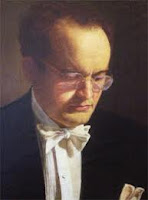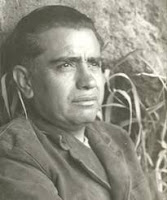In my seemingly ceaseless pursuit of unfamiliar music a fleeting question entered my head: "What did Swedish Baroque music sound like?" So I decided to try and answer it. In the process I stumbled upon a modest Swedish equivalent of the Bach dynasty - namely the Düben family.
The composers on the family tree seem to begin with Andreas Düben I (of whom I have heard no music) and continue with his two sons, Martin Düben (c.1599-1649) and Andreas Düben the Elder (c.1597-1662). The latter's son, the exceptional Gustaf Düben the Elder (1628-1690), fathered two further composers, Baron Gustaf von Düben the Younger (1660–1726) and Baron Anders von Düben the Younger (1673–1738). Four generations then - at least three of them in the service of the Swedish monarchy - and one composer at least whose name needs spreading far and wide .
Both Martin and Andreas Düben the Elder pupil of the influential Dutch master Sweelinck (about whom I've been meaning to do a post for some time), so good things should be expected from them. They are classed, like their father, with the North German organ school (which Sweelinck helped to found). The only piece I've been able to lay my hands on for you by Martin is, appropriately enough, a Praeambulum for organ - a piece that is pleasing unpredictable in some of its harmonic progressions. A few works of Andreas Düben the Elder have also survived. He is the man credited with bringing the influence of Sweelinck to Sweden, so it's not surprising to find a chorale fantasia, Wo Gott der Herr nicht bei uns hält, in his output. As is usual with this form, the phrases of the
chorale melody, elaborated, are set amidst contrasting yet complementary music and (perhaps inspired by the echo fantasias of Sweelinck) there are charming echo effects too. We also have a Suite of courtly instrumental dances. Andreas also wrote music for the funeral of King Gustavus II Adolphus in 1634, His Pugna Triumphalis is for double-choir and shows that the Gabrieli revolution in Venice was well and truly established in Sweden. It is revealing that by the time of the five-part Miserere mei Deus, written for the funeral of King Charles X in 1660, the style has become recognisably mid-Baroque and shows a Monteverdian influence - albeit in a plainer, more direct manner.
With Gustaf Düben the Elder we come to the man who seems to me to be the Johann Sebastian of the Düben family. In his attractive organ Suite (which can also be heard in this version for harpsichord), we see the effect of the standardisation of the German-influenced Baroque suite into its familiar key movements - Praeludium, Allemande, Courante and Sarabande. Bach would later compose many a work build around those forms. The prelude is dropped but other three remain in his Suite for strings. Both works are full of melodic appeal and have unexpected rhythms and phrase lengths that keep them fresh. We have quite a bit of vocal music from old Gustaf. For starters he wrote a catchy hymn tune of his own, Jesus är min vän den bäste ('Jesus is my best friend'), but also wrote a beautiful setting of Fader vår ('Our Father') - a work I heartily recommend to you. Just as fine is his motet Surrexit pastor bonus. If you like the music of Monteverdi and Schütz you should also enjoy these excellent pieces. The wonders of this unfamiliar mid-Baroque Swedish master continue to grow when you encounter his spiritual songs, a selection of which can be heard here. These are of remarkable quality. I would single out Tröstesång ('Comforting song') as being a particular delight. (Now that's one catchy tune! Now where have I heard it before? Oh yes!!)
What then of Gustaf's sons? Well, unfortunately I can't find any music by Gustaf Jnr. There's not much I can offer you from Anders either, other than his contributions to the Narvabaletten - a ballet written to commemorate King Charles XII's victory over the Russians at the Battle of Narva in 1700. There's a Choeur des guerriers, a Marche pour les Suédois and an Entrèe pour les Colèriques. What else was young Anders capable of?
And there the musical line ends. Alas.
















